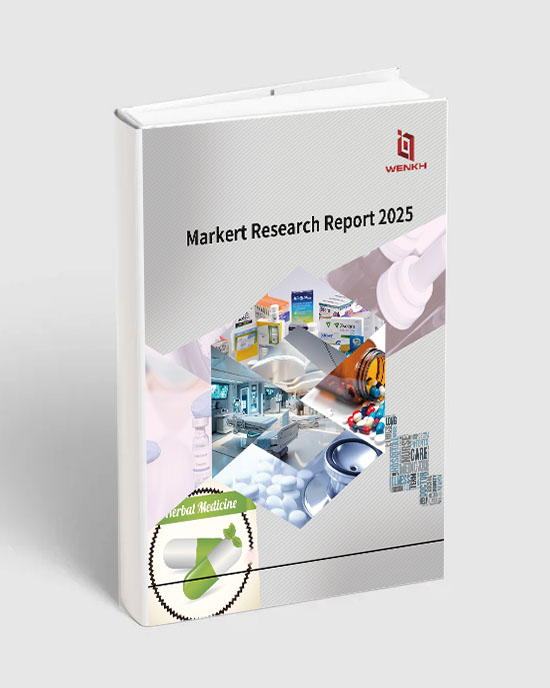
Global Chloroquine Phosphate Market Competitors, Segment Types and Downstream Applications Research Report 2025



Research Summary
Chloroquine phosphate is a medication and antimalarial drug used to prevent and treat malaria, a mosquito-borne infectious disease caused by Plasmodium parasites. It is a synthetic derivative of quinine, a natural compound found in the bark of the cinchona tree. Chloroquine phosphate works by interfering with the ability of the Plasmodium parasites to metabolize and replicate within red blood cells, effectively killing them and preventing the spread of the infection. Besides its antimalarial properties, chloroquine phosphate has also been used to treat certain autoimmune diseases, such as rheumatoid arthritis and lupus, due to its immunosuppressive effects. However, its use as an antimalarial drug has become less effective in some regions due to the emergence of drug-resistant strains of the malaria parasite. Therefore, it is essential to follow medical guidelines and dosage recommendations while using chloroquine phosphate to ensure its proper and safe administration for the intended medical purposes.
According to WENKH research statistics, the global Chloroquine Phosphate market size will reach 102.82 Million USD in 2025 and is projected to reach 38.79 Million USD by 2032, with a CAGR of -13.00% (2025-2032). Among them, the Asia-Pacific Chloroquine Phosphate market is undergoing rapid changes, reaching Million USD in 2025, accounting for approximately % of the global market share. It is projected to reach Million USD by 2032.
The global Chloroquine Phosphate market is highly competitive, with key market players including Sanofi, Bayer, Ipca Laboratories, Cipla, Teva Pharmaceuticals, Merck, AstraZeneca, Pharco Pharmaceuticals, Indofarma, Jayson Pharmaceuticals, AM-Europharma, Atlantic Pharmaceutical, Humax Pharmaceutical, Ace Pharmaceuticals BV, etc. This report categorizes the competitive landscape of the global Chloroquine Phosphate market into three tiers based on annual revenue, with the top three market players holding approximately % of the total market share.
This report provides an in-depth analysis of the global Chloroquine Phosphate market, including market size, price trends, market status and future development prospects. It particularly focuses on the market share, product characteristics, pricing, sales revenue, and gross profit margin of major players in the global Chloroquine Phosphate industry. Additionally, this report provides an in-depth analysis of the market status and future development trends of different product segments of Chloroquine Phosphate and their downstream application fields.
In terms of data, this report includes a comprehensive time-series dataset. The historical data spans from 2020 to 2024, providing a solid foundation for analyzing past market trends. The year 2025 is used as a base year to accurately assess the current market landscape. Forecast data covers the period from 2026 to 2032, utilizing scientific analysis methods and models to offer forward-looking predictions and insights into the market's future development. This provides valuable reference information for industry participants and stakeholders.
The report covers countries including United States, China, Germany, Japan, France, South Korea, United Kingdom, India, Italy, Brazil, Mexico, Indonesia, Vietnam and South Africa. It particularly focuses on the sales revenue of Chloroquine Phosphate in these countries, as well as the product segmentation and downstream application market size of each country. The report provides an in-depth analysis of the regional distribution and future development trends of the Chloroquine Phosphate market. By considering local policies, this report evaluates the market prospects of Chloroquine Phosphate in each country, aiming to help companies gain a comprehensive understanding of the industry characteristics and development potential in different regions, optimize regional business layout, and develop precise market strategies to achieve global development goals.
This report places a strong emphasis on data quality and reliability, utilizing diverse and extensive data sources to ensure the accuracy and validity of the information presented. Primary data collection involves multiple channels, including in-depth interviews with senior executives, industry experts, supply chain stakeholders, and end consumers. These interviews provide key insights into corporate strategic planning, industry policy interpretation, supply chain dynamics, and end-user experiences. Secondary data sources cover a wide range of authoritative statistics from government agencies, customs databases, industry associations, third-party paid databases, brokerage research reports, academic research findings, corporate annual reports, financial statements, real-time news updates, and relevant information from international organizations. These data sources serve as a solid foundation for verification and analysis.
Companies Covered
Sanofi
Bayer
Ipca Laboratories
Cipla
Teva Pharmaceuticals
Merck
AstraZeneca
Pharco Pharmaceuticals
Indofarma
Jayson Pharmaceuticals
AM-Europharma
Atlantic Pharmaceutical
Humax Pharmaceutical
Ace Pharmaceuticals BV
Product Segment
Chloroquine Phosphate Injectable
Chloroquine Phosphate Oral
Product Application
Malaria
COVID-19
Others
Chapter Scope
Chapter 1: Product Statistical Scope, Product Segmentation Types and Downstream Applications, Overall Market Size, Current Status and Development Prospects
Chapter 2: Global Chloroquine Phosphate Industry Chain Analysis
Chapter 3: Global Chloroquine Phosphate Industry Environment Analysis and Porter's Five Forces Analysis
Chapter 4: Analysis of the Competitive Landscape of Major Companies in the Global Chloroquine Phosphate Market (Market Share, Product Revenue Comparison, Tier Division, Corporate Expansion and M&A Trends)
Chapter 5: Analysis of Global Major Companies (Company Profiles, Product Specifications and Features, Product Revenue and Product Gross Profit Margin)
Chapter 6: Global Chloroquine Phosphate Market Analysis by Countries, Product Segment and Downstream Application
Chapter 7: United States Chloroquine Phosphate Market Size, Product Segment, Downstream Application Analysis
Chapter 8: China Chloroquine Phosphate Market Size, Product Segment, Downstream Application Analysis
Chapter 9: Germany Chloroquine Phosphate Market Size, Product Segment, Downstream Application Analysis
Chapter 10: Japan Chloroquine Phosphate Market Size, Product Segment, Downstream Application Analysis
Chapter 11: France Chloroquine Phosphate Market Size, Product Segment, Downstream Application Analysis
Chapter 12: South Korea Chloroquine Phosphate Market Size, Product Segment, Downstream Application Analysis
Chapter 13: United Kingdom Chloroquine Phosphate Market Size, Product Segment, Downstream Application Analysis
Chapter 14: India Chloroquine Phosphate Market Size, Product Segment, Downstream Application Analysis
Chapter 15: Italy Chloroquine Phosphate Market Size, Product Segment, Downstream Application Analysis
Chapter 16: Brazil Chloroquine Phosphate Market Size, Product Segment, Downstream Application Analysis
Chapter 17: Mexico Chloroquine Phosphate Market Size, Product Segment, Downstream Application Analysis
Chapter 18: Indonesia Chloroquine Phosphate Market Size, Product Segment, Downstream Application Analysis
Chapter 19: Vietnam Chloroquine Phosphate Market Size, Product Segment, Downstream Application Analysis
Chapter 20: South Africa Chloroquine Phosphate Market Size, Product Segment, Downstream Application Analysis
Chapter 21: Research Conclusion
Chapter 22: Methodology and Data Source
Purpose and Value of the Report
Market Trend Insights: Analyze industry trends, market dynamics, and future growth potential to help companies forecast changes and develop strategic plans.
Competitive Landscape Analysis: Understand key players' revenue segmentation, strategies, market share, and business models to guide competitive decisions.
Investment Decision Support: Provide feasibility analysis through market size, growth rate, demand trends, and potential risks for informed investment decisions.
Target Customer and Demand Analysis: Examine consumer behavior, purchasing preferences, and pain points to optimize products and improve market penetration.
Policy and Regulatory Insights: Interpret relevant industry policies to ensure compliance and mitigate regulatory risks.
Business Model Optimization: Offer data-driven suggestions for enhancing business models and improving profitability.





